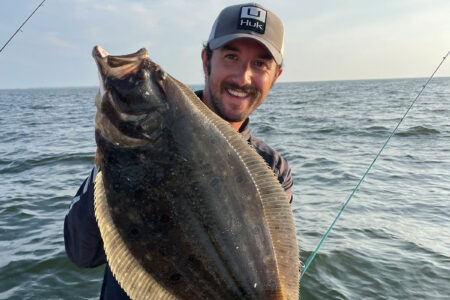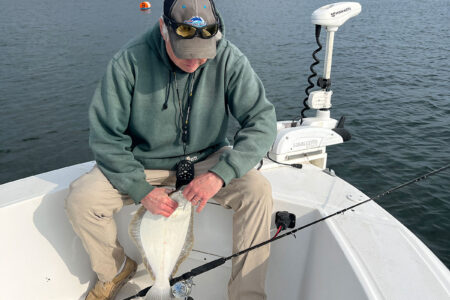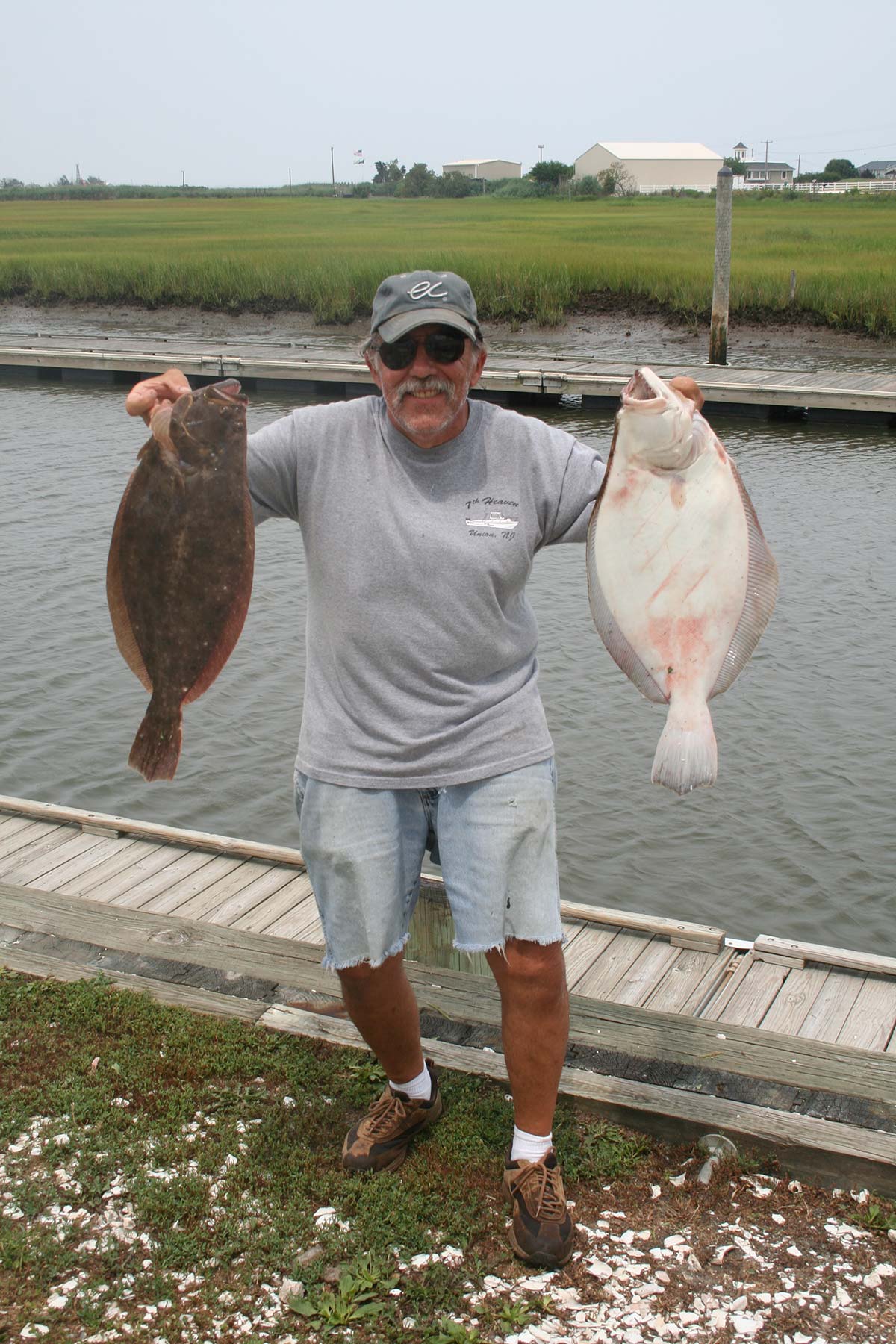
While NJ anglers must wait until May 2, DE flounder-pounders are already on the meat!
Ah, the exciting summer flounder. The thrill of the strike when the line pops from the outrigger clip. Then the screaming reel as the powerful fish takes line against a tight drag followed by those gravity defying jumps where the fish seems to hang suspended in the air.
Whoa, wait a minute; that’s not a summer flounder! Those fish lay on the bottom, covered up with sand and wait for a meal to pass by. Then they pop up, grab the food and try to get back to the bottom. No savage strikes, no long, fast runs and sky-high jumps are rare.
So why all the excitement for such a slow, docile fish? The number one reason is they taste so good. The second reason is they are available to anglers from shore on out to the Continental Shelf. That means you can catch them on your own boat, a charter or head boat or you can walk down to the water’s edge at an inlet or beach, cast a line and catch them from shore.
Warming Up
In Delaware, the first flounder will be caught close to shore in shallow water. This is because shallow water warms up before deeper water and that puts flounder in a feeding mood in early spring. It takes several days of warm, sunny weather in April to push the water temperature above the flounder’s low tolerance of 56 degrees. This usually happens when we have a high tide in the early afternoon giving the sun all morning to warm the water. The best time to fish would be two hours before the flood and two hours into the ebb.
Keep in mind the time on your tide chart is for the tide, not the current. For example, the flats at Indian River Bay are going to start falling about an hour and a half after high tide at Indian River Inlet. The same is true for the water in the Lewes and Rehoboth Canal and the high tide at Cape Henlopen.
Years ago, I was watching the water run out of Indian River Inlet with a fellow outdoor writer from Illinois. He said,” Wow, that’s a fast-moving river.”
“I said give it another hour and it’ll stop, turn around and run the other way.”
He said, “No it won’t! The Mississippi doesn’t do that.”
I said,” It does in New Orleans.”
While it is possible to catch flounder this early in the season, they are not as aggressive as they will be when the water temperature gets to 65 degrees. Now is the time for a slower presentation with a nice live minnow on a circle hook with perhaps a bit of flash just to get the fish’s attention.
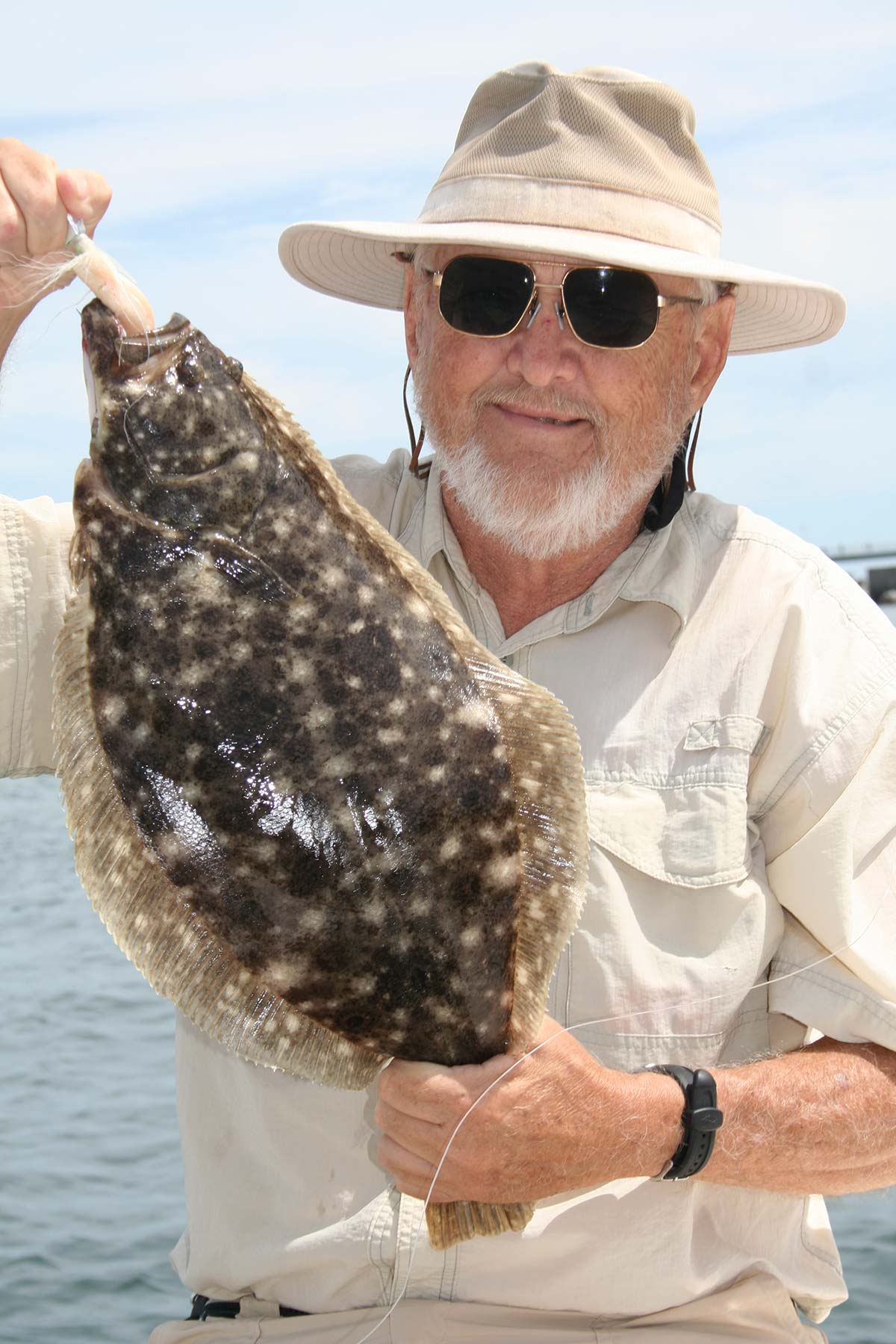
Spring Shallows
When fishing in the warmer shallows, I generally fish with two lines in the water. One will have said minnow with no weight. That rod will be in a rod holder. This is the perfect setup for a circle hook; when a flounder picks up the minnow, he will swim away with it and when the line comes tight the fish will be hooked.
The second outfit will have a small, green bucktail decorated with a root beer Gulp crawfish. This outfit I will hold and jig a little bit slower when the water is cold and faster as the water warms. That root beer color seems to work well in the Lewes and Rehoboth Canal. When fishing other areas, I will use other colors until I find out what works at that location at that time and day. Never stick with anything that isn’t working. Keep changing the colors of the Gulp! and try the Fishbites Fight Club 5-inch Dirty Boxer in Tap Out or Haymaker.
| DELAWARE GENERAL FISHING LICENSE |
| Non-resident: $20.00 |
| Seven-day non-resident: $7.50 |
One advantage to fishing shallow areas before Memorial Day or during the week is the lack of boat traffic. This is especially important on the shallow area in Indian River Bay from White’s Creek on up to the Junction Buoy into Massey’s Ditch back down that channel to South Shore Marina on back to White’s Creek. This area runs about 4 feet deep on high tide so most boats can get across there except on the very bottom of the tide. In the summer, during the day, the place is like Grand Central Station with boats going in every direction. For this reason, during the summer, I fish there as early as possible; even going out before sunup. In the spring I fish the tides. I go out during the last of the flood into the first two hours of the ebb.
Drift Assist
I use my electric trolling motor to move around the flat and control my drift. When I am ready to start a new drift, I engage my outboard and run around the deep water at the edge of the flat so as not to disturb the fish. Keep in mind that the Lewes and Rehoboth Canal holds flounder all season. In the spring you want to fish the top of the flood into the first of the ebb as the sun will heat up the water in the canal. In the summer just the opposite is true. The sun will heat the water in the canal above the flounder’s upper tolerance of 72 degrees so you want to fish the very first of the incoming water as it flows from the cooler bay. If this occurs very early in the day, so much the better.
I use the exact same tackle as described for Indian River Bay. However, the Lewes and Rehoboth Canal is rich with structure. I still allow the live minnow to swim without weight behind the boat, but the bucktail with Gulp or Fishbite decoration is now fished in the eddies behind the numerous dock pilings, boats, bridge pilings and any other structure I happen to see. Flounder will lay on the bottom behind such things waiting for something they want to eat to flow past in the current. I try to make my bucktail look like something they want to eat.
| DELAWARE REGULATIONS |
| Size Limit: 16.5 inches |
| Bag Limit: Four per day |
| Season: Year-round |
The Broadkill River begins where the Lewes and Rehoboth Canal ends. When you leave the Lewes boat ramp if you go to your left, you will be in the river. Depending on the direction of the current I will either begin my drift as soon as I clear the boat ramp (incoming) or else I will run up the river to Oyster Rocks and start fishing there (outgoing).
If you begin at Oyster Rocks you want to stay on the western bank. There are all sorts of snags on the eastern side of the river that will cost you your rig and they don’t even say thank you.
I stay tight to that western shore all the way down to the duck blind and the small feeder creek that runs out alongside. I have caught quite a few flounder in the outflow of said creek. Just beyond the creek the bottom is littered with shells and flounder like to lay here as well.
From this point on down to the ramp fish the drop-off from the bank to the river. I use my trolling motor to keep the baits working from the bank to eight or ten feet of water and then back up again.
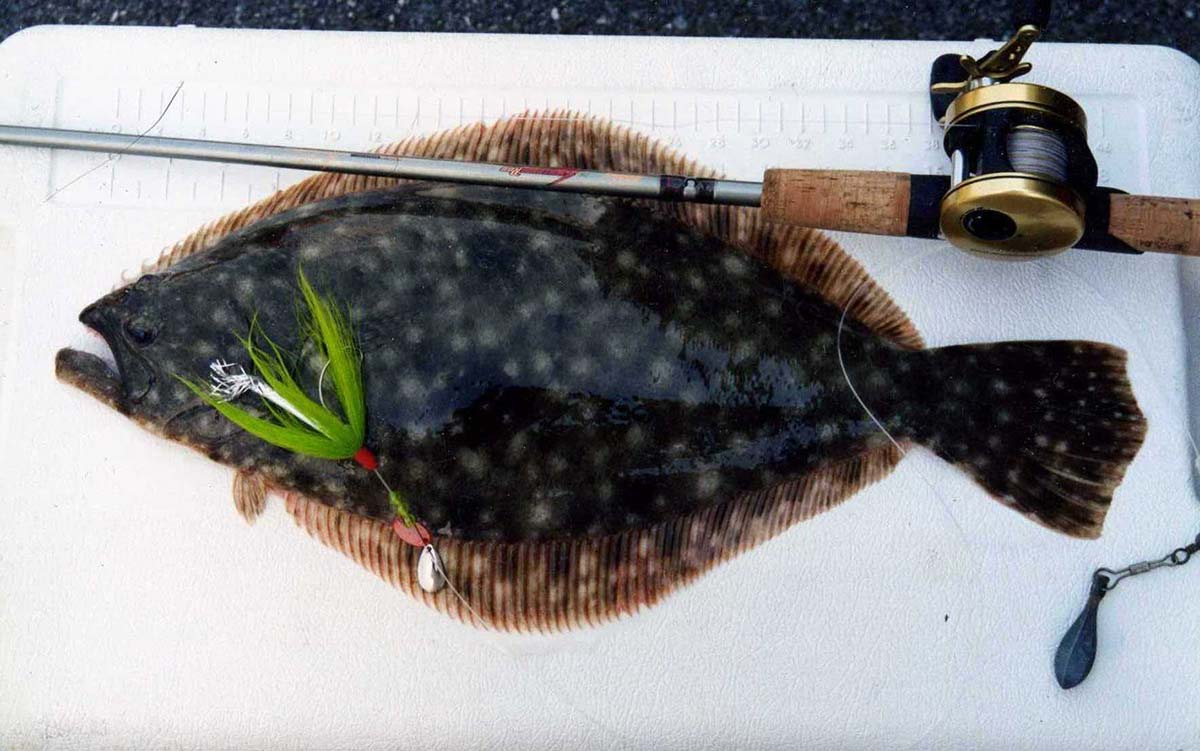
When To Go Deep
Once summer arrives the best flounder fishing moves to the various reef sites in Delaware Bay and the ocean. The Old Grounds, about 12 to 15 miles east of Indian River Inlet, also holds quality flounder.
I have found jigging with a bucktail that is decorated with Gulp or Fishbites is the most productive technique for catching these flounder. The weight of the bucktail is determined by the depth of the water, the strength of the current and the type of the line on your reel. It almost goes without saying at this point, but those who use braided line can get away with a lighter bucktail than those who use mono.
You want to maintain contact with the bottom so you can tell when things are getting too sticky. At that point you want to take up a bit of line to keep the bucktail working just above, but not in, the structure. I learned a good lesson several years ago when a head boat captain showed me how to catch flounder during slack water. He used a spinning outfit with light braided line and a bucktail. He would cast the jig away from the boat and work it back across the bottom. He put three flounder in the box while the rest of us were eating sandwiches.
As colder weather and water move in, the flounder will move further offshore. Last December I went sea bass fishing on a head boat and the pool winner was a 6-pound flounder. The angler targeted flounder by working a bucktail off the stern.
A December fluke? Yes, that’s allowed in Delaware.
